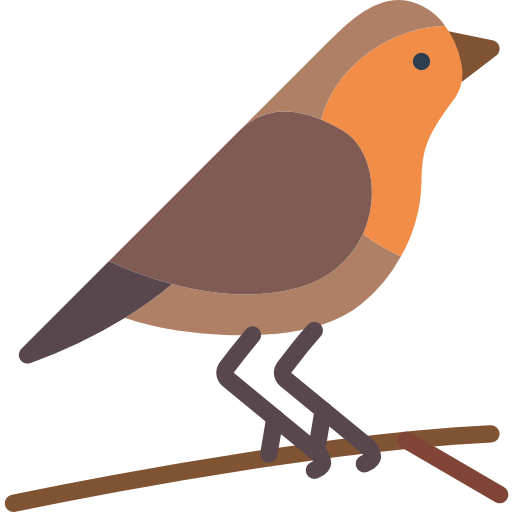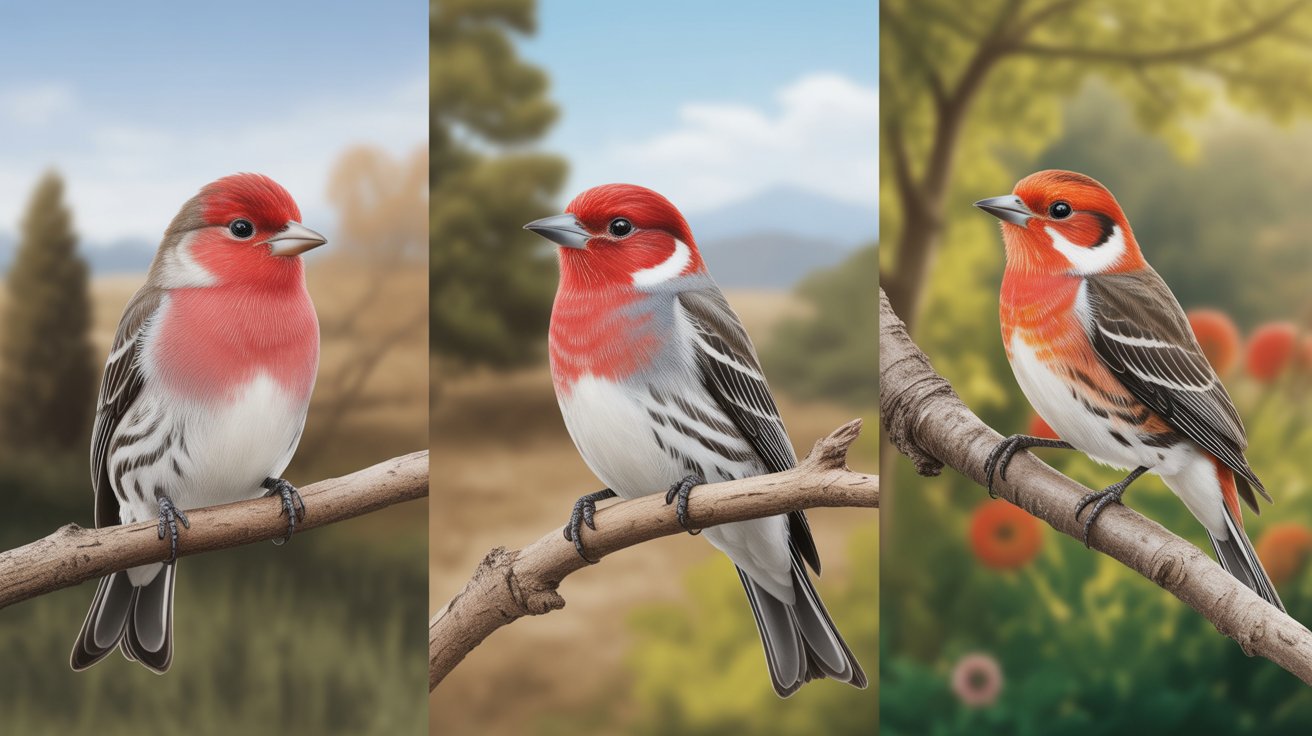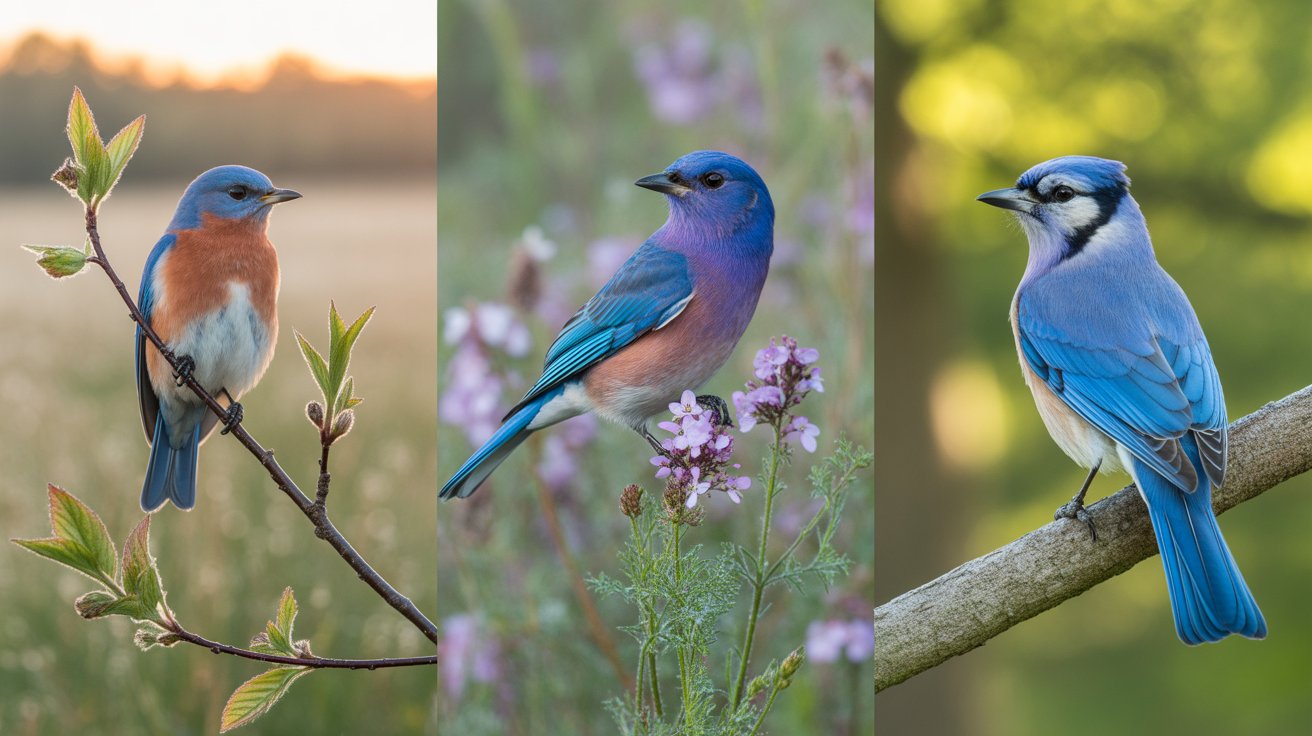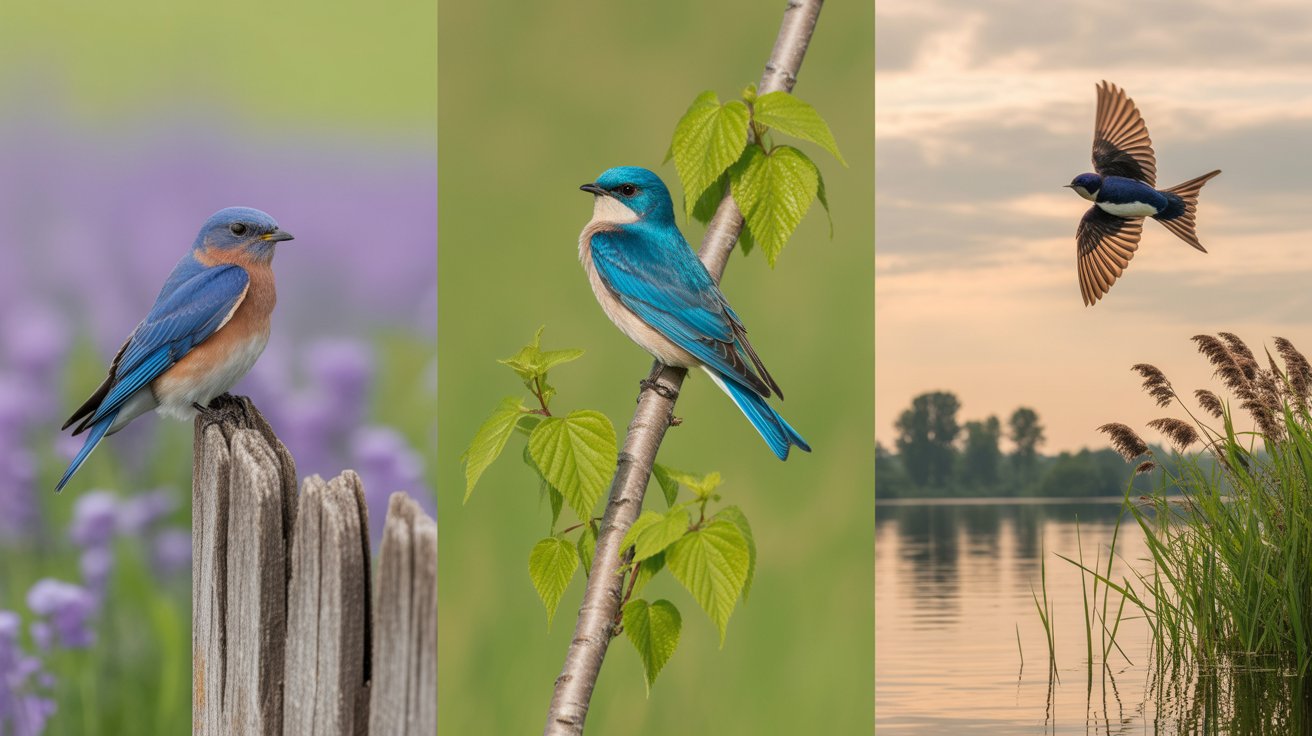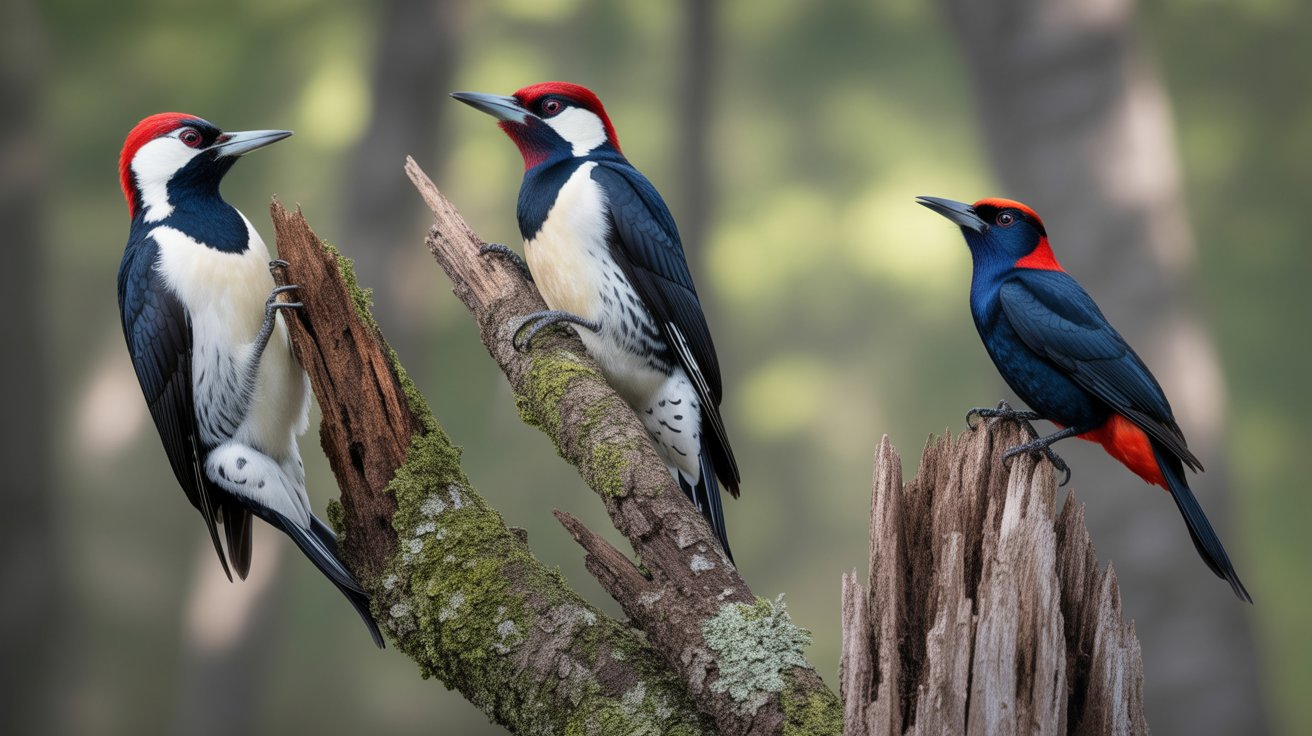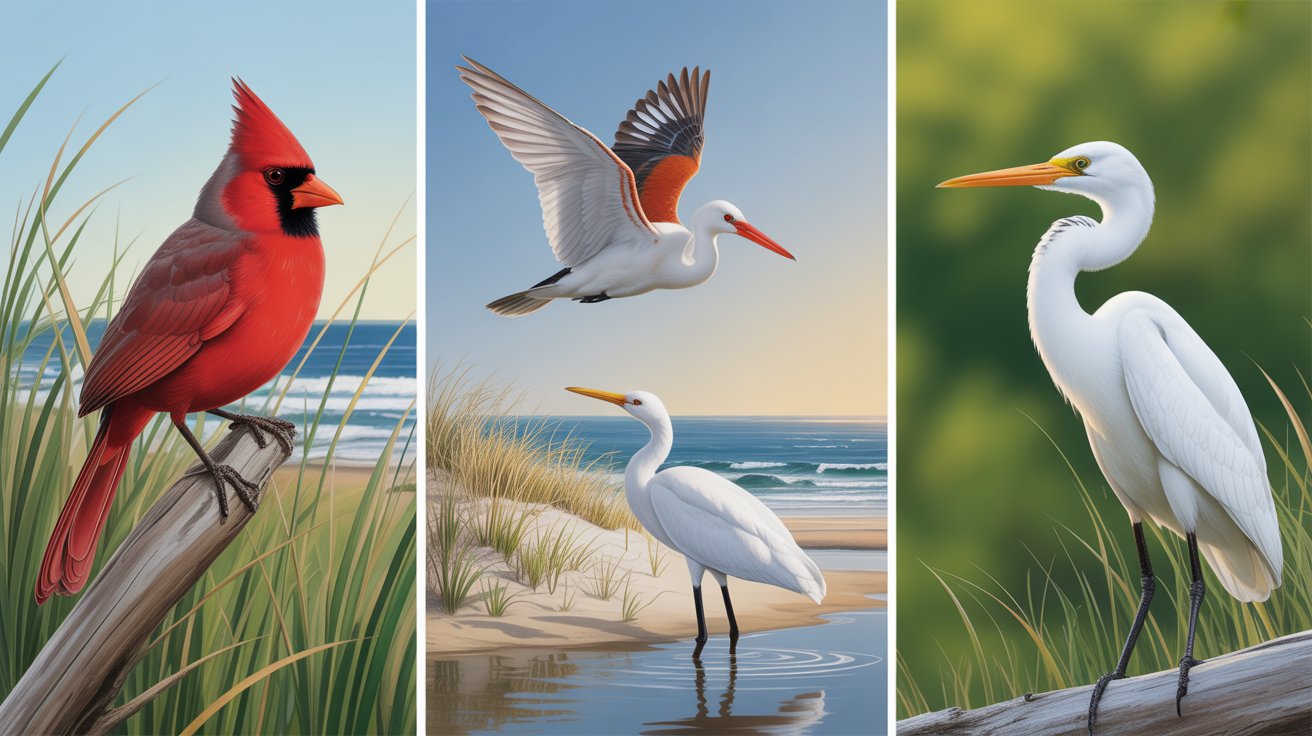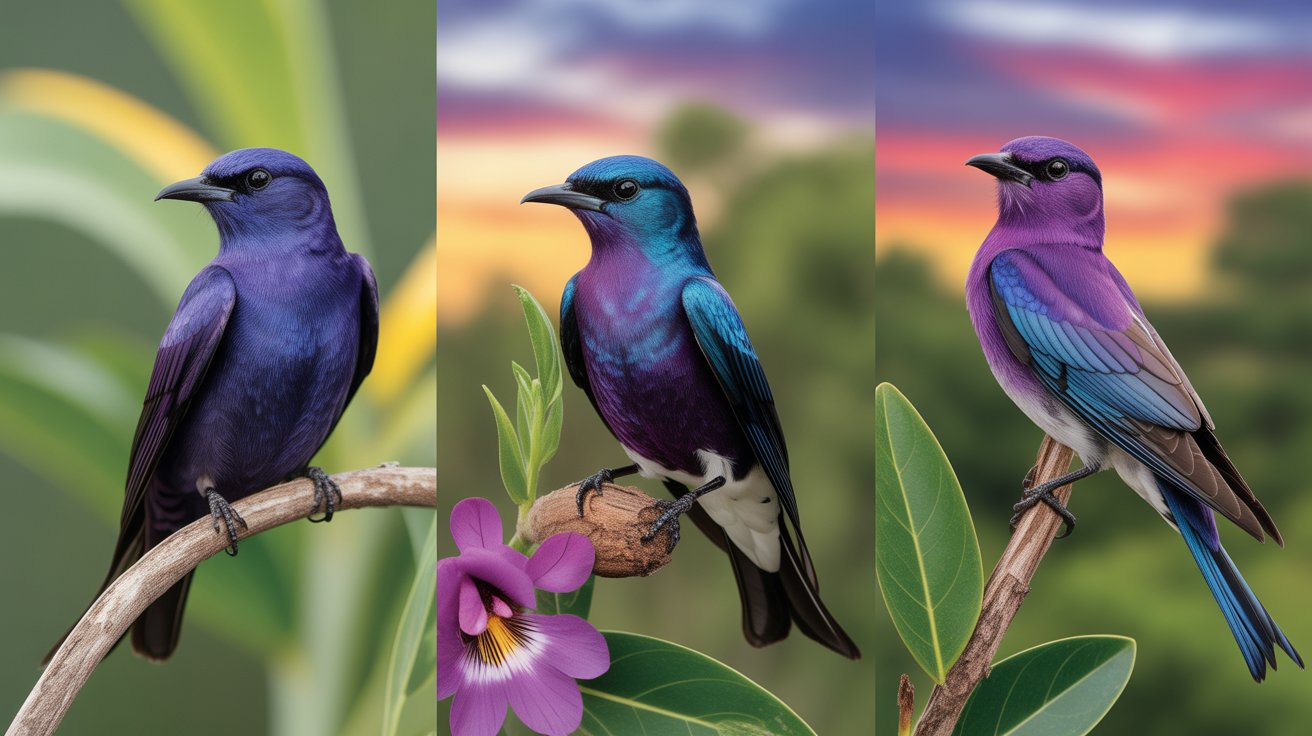Ever wondered how many birds start with the letter A? You might be surprised by the variety! Whether you’re an avid birdwatcher, a student, or someone who just loves learning quirky animal facts, exploring the world of birds alphabetically is a fun way to expand your knowledge—and maybe even impress your friends.
In this article, you’ll discover 25 fascinating birds that all share something in common: their names begin with the letter A. From vibrant tropical species to majestic birds of prey, this list has it all. Each entry includes key details like the bird’s scientific name, size, wingspan, and distinctive features, so you’ll get more than just a name—you’ll get a complete picture.
What makes this list even better is how it’s written just for you. It’s designed to be engaging, easy to read, and informative. Every bird is covered in short paragraphs, so you can quickly scan the details or dive deeper if you’re curious.
Contents
- 25+ Birds That Start With A
- 1. African Grey Parrot
- 2. American Robin
- 3. Andean Condor
- 4. Australian King Parrot
- 5. Arctic Tern
- 6. African Fish Eagle
- 7. American Avocet
- 8. Australian Magpie
- 9. Amazon Kingfisher
- 10. Alpine Accentor
- 11. Ashy Prinia
- 12. African Jacana
- 13. American Woodcock
- 14. Alpine Swift
- 15. American Kestrel
- 16. Azure Kingfisher
- 17. Asian Koel
- 18. American Bittern
- 19. Arctic Warbler
- 20. Asian Glossy Starling
- 21. African Paradise Flycatcher
- 22. Andean Flicker
- 23. African Scops Owl
- 24. Australian Pelican
- 25. Allen’s Hummingbird
- FAQs
- Conclusion
25+ Birds That Start With A
So grab your binoculars (or just your curiosity), and let’s explore 25 birds that start with the letter A!
1. African Grey Parrot
The African Grey Parrot is one of the most intelligent bird species in the world. Known for its advanced ability to mimic human speech and sounds, it’s a popular companion for bird lovers.
This parrot has a sleek silver-grey body with a bright red tail that adds a splash of color. Its expressive eyes and strong beak make it stand out both in looks and personality.
You’ll often find this bird in the rainforests of West and Central Africa, where it lives high in the trees and communicates with a variety of whistles, squawks, and calls.
Key Features:
- Scientific Name: Psittacus erithacus
- Wingspan: 46–52 cm
- Length: 33 cm
- Weight: 400–500 grams
- Habitat: Tropical forests and savannas
- Diet: Fruits, seeds, nuts, and leafy matter
The African Grey isn’t just beautiful—it’s brilliant. If you’ve ever dreamed of owning a talking bird, this might be the one that starts chatting back.
2. American Robin
If you’ve ever seen a bird hopping across your backyard with a rusty red chest, you’ve probably spotted an American Robin. It’s one of the most familiar and loved birds in North America.
American Robins are known for their melodious songs, often heard early in the morning, especially in spring. Their presence often signals the end of winter and the beginning of warmer days.
They build tidy, cup-shaped nests in trees and are often seen foraging for worms in lawns or gardens.
Key Features:
- Scientific Name: Turdus migratorius
- Wingspan: 31–41 cm
- Length: 23–28 cm
- Weight: 77–85 grams
- Habitat: Woodlands, gardens, parks
- Diet: Worms, insects, berries
With its cheery tune and bright coloring, the American Robin is a symbol of renewal and a delight to spot in any backyard.
3. Andean Condor
The Andean Condor is one of the largest flying birds in the world—and seeing one soar above the Andes mountains is a breathtaking experience.
These majestic birds are known for their massive wingspan and striking black and white plumage. They are scavengers by nature, playing a critical role in their ecosystem by cleaning up carcasses.
Despite their size, Andean Condors are graceful gliders, capable of traveling great distances with minimal wing flapping.
Key Features:
- Scientific Name: Vultur gryphus
- Wingspan: Up to 320 cm (10.5 feet)
- Length: 100–130 cm
- Weight: 11–15 kg
- Habitat: Andes Mountains and South American coastal regions
- Diet: Carrion (dead animals)
If you’re ever trekking through South America, keep your eyes on the sky—you just might catch a glimpse of this soaring giant.
4. Australian King Parrot
Bright and eye-catching, the Australian King Parrot is a native of eastern Australia and is often spotted in rainforests and suburban gardens. Males have striking red heads and chests, while females are mostly green with red underbellies.
These parrots are friendly and often approach people, especially if there’s food involved. They’re especially popular among bird enthusiasts due to their gentle nature and vivid appearance.
Key Features:
- Scientific Name: Alisterus scapularis
- Wingspan: 42–48 cm
- Length: 40–45 cm
- Weight: 210–275 grams
- Habitat: Rainforests, woodlands, and gardens
- Diet: Fruits, seeds, and flowers
They’re beautiful, sociable, and quite used to human presence—don’t be surprised if one lands near you on your next forest walk in Australia.
5. Arctic Tern
If you’re looking for a bird with serious travel miles, the Arctic Tern might just take the crown. This small seabird holds the record for the longest annual migration—traveling from the Arctic to the Antarctic and back every year.
The Arctic Tern has a sleek body, white plumage, and a sharp, red beak. Its forked tail gives it a graceful silhouette in flight.
Despite its small size, its journey is nothing short of legendary—clocking in over 44,000 miles a year.
Key Features:
- Scientific Name: Sterna paradisaea
- Wingspan: 75–85 cm
- Length: 28–39 cm
- Weight: 86–127 grams
- Habitat: Arctic breeding grounds, global coastal migration routes
- Diet: Small fish, crustaceans
Talk about endurance! If you admire resilience and the beauty of migration, the Arctic Tern will surely inspire you.
Here’s the continuation of your article from bird #6 to #25, in the same friendly and SEO-optimized format:
6. African Fish Eagle
The African Fish Eagle is a symbol of power and freedom, often referred to as the “Voice of Africa” due to its iconic, echoing call. You’ll usually spot this majestic bird perched near lakes or rivers, scanning the waters for its next catch.
It has a striking white head and chest, contrasting with its dark brown body and black wings. With strong talons and exceptional eyesight, it’s built for precision fishing.
Key Features:
- Scientific Name: Haliaeetus vocifer
- Wingspan: 2.0–2.4 m
- Length: 63–75 cm
- Weight: 2.0–3.6 kg
- Habitat: Sub-Saharan Africa, near freshwater lakes and rivers
- Diet: Mainly fish, but also birds and small mammals
The African Fish Eagle is a national bird for several African countries—and once you hear its cry, you’ll understand why.
7. American Avocet
Elegant and long-legged, the American Avocet is a wading bird known for its thin, upturned bill and graceful appearance. It’s often seen sweeping its bill through shallow waters to catch aquatic insects.
During breeding season, its neck and head turn a rusty orange, adding to its delicate beauty. It nests in open, wetland areas and can be spotted throughout much of the United States.
Key Features:
- Scientific Name: Recurvirostra americana
- Wingspan: 68–76 cm
- Length: 40–51 cm
- Weight: 275–420 grams
- Habitat: Shallow wetlands, mudflats, salt ponds
- Diet: Insects, crustaceans, and small invertebrates
If you love observing wetland birds, the American Avocet will capture your heart with its elegant stride and calm demeanor.
8. Australian Magpie
The Australian Magpie is known not only for its intelligence but also for its unique warbling song. It’s a common sight in suburban areas, fearlessly walking on lawns and even mimicking human voices.
Despite their black-and-white plumage, these birds are anything but ordinary. They are territorial and have been known to swoop at people during nesting season.
Key Features:
- Scientific Name: Gymnorhina tibicen
- Wingspan: 65–85 cm
- Length: 37–43 cm
- Weight: 220–350 grams
- Habitat: Urban areas, grasslands, forests
- Diet: Insects, small animals, and scraps
Love them or fear them during swooping season, the Australian Magpie is an unmistakable part of Aussie life.
9. Amazon Kingfisher
Vivid green and highly alert, the Amazon Kingfisher lives in the tropical forests and rivers of Central and South America. It perches quietly before plunging headfirst into water to snatch small fish.
Unlike its more flamboyant relatives, the Amazon Kingfisher is a bit more subtle in size and color, but its emerald feathers shimmer beautifully in sunlight.
Key Features:
- Scientific Name: Chloroceryle amazona
- Wingspan: ~25–30 cm
- Length: 29 cm
- Weight: 98–140 grams
- Habitat: Freshwater rivers, lakes, streams in forests
- Diet: Fish, insects, crustaceans
If you’re ever canoeing in the Amazon, keep your eyes peeled for this little emerald hunter.
10. Alpine Accentor
The Alpine Accentor is a small, ground-dwelling bird found in high mountain ranges across Europe and Asia. With its streaked brown back and orange flanks, it blends perfectly into rocky slopes and alpine meadows.
These birds are known for their complex social structures and even polygamous breeding behavior.
Key Features:
- Scientific Name: Prunella collaris
- Wingspan: 25–29 cm
- Length: 15–17 cm
- Weight: 30–45 grams
- Habitat: Rocky mountain regions and cliffs
- Diet: Insects and seeds
Despite its remote habitat, the Alpine Accentor has a fascinating life full of cooperation and song.
11. Ashy Prinia
The Ashy Prinia is a small, active songbird commonly found across the Indian subcontinent. You’ll usually spot it flitting through low shrubs and gardens, flicking its tail up and down as it chirps loudly.
With its ash-grey upperparts, creamy underbelly, and reddish-brown eyes, this tiny bird has a bold personality for its size. It’s not shy around humans and often nests in backyards and farmland.
Key Features:
- Scientific Name: Prinia socialis
- Wingspan: ~15–17 cm
- Length: 13–14 cm
- Weight: 6–8 grams
- Habitat: Scrublands, gardens, agricultural fields
- Diet: Insects and small invertebrates
Its sharp, repetitive call is a familiar sound in many Indian neighborhoods, making it one of the most recognized songbirds in the region.
12. African Jacana
The African Jacana is sometimes called the “Jesus Bird” because it appears to walk on water. This illusion is thanks to its extremely long toes, which help distribute its weight on floating vegetation.
With chestnut-colored feathers and a bright blue frontal shield, the African Jacana is both elegant and adapted to life on marshy waters.
Key Features:
- Scientific Name: Actophilornis africanus
- Wingspan: 45–52 cm
- Length: 23–31 cm
- Weight: 130–260 grams
- Habitat: Freshwater wetlands, lily-covered lakes
- Diet: Insects, larvae, and aquatic invertebrates
Interestingly, males take care of the eggs and chicks, carrying them under their wings when threatened.
13. American Woodcock
This plump, camouflaged bird is often overlooked due to its earth-toned feathers that blend into the forest floor. The American Woodcock is famous for its courtship display, which includes spiraling sky dances at dawn and dusk.
It has a long bill designed for probing moist soil for earthworms—its primary food source.
Key Features:
- Scientific Name: Scolopax minor
- Wingspan: 45–50 cm
- Length: 27–33 cm
- Weight: 140–230 grams
- Habitat: Moist woodlands and thickets
- Diet: Earthworms and other soil invertebrates
If you’re hiking through quiet woods and hear a sharp “peent” sound, pause—you might be near an American Woodcock.
14. Alpine Swift
Fast, sleek, and powerful, the Alpine Swift is a high-flying bird known for spending most of its life in the air. These swifts can stay aloft for up to 200 days straight without landing!
Their brown-and-white plumage and scimitar-shaped wings make them perfectly suited for aerial life.
Key Features:
- Scientific Name: Tachymarptis melba
- Wingspan: 51–58 cm
- Length: 20–23 cm
- Weight: 90–120 grams
- Habitat: Cliffs, mountains, urban areas
- Diet: Flying insects
If you ever see a flock darting through the sky like darts, you might be witnessing the aerial ballet of Alpine Swifts.
15. American Kestrel
The American Kestrel is North America’s smallest falcon but don’t let its size fool you—it’s a fierce hunter. With a reddish back, slate-blue wings, and bold facial markings, it’s both beautiful and deadly to small prey.
It hovers midair before swooping down to catch grasshoppers, mice, or small birds.
Key Features:
- Scientific Name: Falco sparverius
- Wingspan: 50–60 cm
- Length: 22–31 cm
- Weight: 80–165 grams
- Habitat: Grasslands, meadows, farmlands
- Diet: Insects, rodents, small birds
This bird is often spotted perched on telephone wires, watching and waiting for movement below.
16. Azure Kingfisher
With its electric blue upperparts and fiery orange underparts, the Azure Kingfisher is a gem of the Australian waterways. It perches low over streams, waiting to dive for fish and aquatic insects.
Despite its vibrant coloring, it’s shy and elusive—usually flying off quickly when approached.
Key Features:
- Scientific Name: Ceyx azureus
- Wingspan: ~30 cm
- Length: 17–19 cm
- Weight: 29–35 grams
- Habitat: Riverbanks, creeks, swamps
- Diet: Small fish, insects, crustaceans
The Azure Kingfisher is a reminder that even the smallest birds can be among the most striking.
17. Asian Koel
Famous for its loud, melodic call, especially during the early mornings of summer, the Asian Koel is a bird you’ll likely hear before you see. Males are glossy black, while females are brown with white speckles.
They’re brood parasites, laying eggs in the nests of crows and letting them raise their chicks.
Key Features:
- Scientific Name: Eudynamys scolopaceus
- Wingspan: 40–45 cm
- Length: 39–46 cm
- Weight: 190–300 grams
- Habitat: Forests, gardens, urban areas
- Diet: Fruits, berries, insects
Their iconic “koo-ooo” call is a nostalgic sound across South Asia.
18. American Bittern
The American Bittern is a secretive marsh bird that relies on camouflage to stay hidden. When threatened, it freezes and points its bill skyward, blending into the reeds.
Its booming, gulping call sounds like water being pumped, earning it nicknames like “thunder-pumper.”
Key Features:
- Scientific Name: Botaurus lentiginosus
- Wingspan: 90–110 cm
- Length: 58–85 cm
- Weight: 370–700 grams
- Habitat: Marshes, wetlands
- Diet: Fish, insects, amphibians
If you love a good birding challenge, spotting a Bittern is like winning the hide-and-seek championship.
19. Arctic Warbler
A small, olive-brown songbird, the Arctic Warbler breeds in the far north and migrates to Southeast Asia. It sings a sharp, buzzy tune and is most often seen darting through willows and shrubs.
It’s a long-distance traveler with a tiny body and a lot of energy.
Key Features:
- Scientific Name: Phylloscopus borealis
- Wingspan: 18–20 cm
- Length: 11–13 cm
- Weight: 8–12 grams
- Habitat: Boreal forests, shrubby wetlands
- Diet: Insects, spiders
Small but mighty, the Arctic Warbler travels thousands of miles every year.
20. Asian Glossy Starling
With its iridescent green-black feathers and piercing red eyes, the Asian Glossy Starling looks like a bird from a fantasy novel. It’s social, noisy, and often found in large flocks in cities and forests.
It adapts well to urban environments and feeds on everything from fruits to garbage.
Key Features:
- Scientific Name: Aplonis panayensis
- Wingspan: 30–35 cm
- Length: 20–25 cm
- Weight: 90–120 grams
- Habitat: Forests, cities, villages
- Diet: Fruits, insects, nectar
You’ll often hear a chorus of starlings before you spot them perched on electric lines or fruit trees.
21. African Paradise Flycatcher
This bird lives up to its name with its long, flowing tail and vibrant colors. Males often have white or rufous plumage, a black head, and eye-catching tail streamers that trail behind in flight.
They’re agile hunters, catching insects midair in dazzling displays.
Key Features:
- Scientific Name: Terpsiphone viridis
- Wingspan: 25–30 cm
- Length: 17–18 cm (up to 30 cm with tail)
- Weight: 12–20 grams
- Habitat: Forests, gardens, woodlands
- Diet: Flying insects
If you ever see a flash of white and black flitting through the trees, it might just be this graceful flycatcher.
22. Andean Flicker
This high-altitude woodpecker prefers rocky slopes and grasslands rather than forests. It nests in burrows dug into dirt banks rather than tree trunks—a unique behavior among woodpeckers.
Its tan body and black-barred back help it blend into the Andean landscape.
Key Features:
- Scientific Name: Colaptes rupicola
- Wingspan: 30–35 cm
- Length: 32 cm
- Weight: 140–180 grams
- Habitat: Andes Mountains, open rocky areas
- Diet: Insects, larvae
You won’t hear it drumming on trees, but you may spot it poking around rocks and earth mounds.
23. African Scops Owl
This tiny owl blends seamlessly into tree bark with its mottled gray and brown feathers. During the day, it roosts motionlessly, virtually invisible.
At night, it emerges to hunt insects and small vertebrates with incredible precision.
Key Features:
- Scientific Name: Otus senegalensis
- Wingspan: 45–50 cm
- Length: 17–19 cm
- Weight: 60–90 grams
- Habitat: Woodlands, savannas
- Diet: Insects, small vertebrates
Its soft “prrp” call is a gentle reminder that not all owls hoot.
24. Australian Pelican
This pelican holds the record for the longest bill of any bird. With a striking white-and-black body and huge wingspan, it’s a graceful flier and skillful fisher.
It scoops up fish with its elastic bill pouch, then tips its head to drain water before swallowing.
Key Features:
- Scientific Name: Pelecanus conspicillatus
- Wingspan: 2.3–2.5 m
- Length: 152–188 cm
- Weight: 4–6.8 kg
- Habitat: Coasts, lakes, rivers
- Diet: Fish, crustaceans
Whether in flight or paddling calmly, the Australian Pelican is a sight to behold.
25. Allen’s Hummingbird
This tiny, copper-colored hummingbird is a marvel of speed and agility. Males flash an iridescent orange-red throat and zip from flower to flower with lightning-fast wingbeats.
They’re most commonly found along the Pacific coast of the U.S.
Key Features:
- Scientific Name: Selasphorus sasin
- Wingspan: 11–12 cm
- Length: 7.5–9 cm
- Weight: 2–4 grams
- Habitat: Coastal scrub, gardens, meadows
- Diet: Nectar, insects
Despite its size, Allen’s Hummingbird is fierce when defending its feeding territory.
FAQs
1. What is the most intelligent bird that starts with A?
The African Grey Parrot is considered one of the most intelligent birds in the world.
2. Which bird has the longest migration?
The Arctic Tern travels from the Arctic to the Antarctic, making it the bird with the longest migration.
3. Are there birds starting with A that are endangered?
Yes, the Andean Condor is considered vulnerable due to habitat loss and human activities.
4. Can I keep any of these birds as pets?
Birds like the African Grey Parrot and Australian King Parrot can be kept as pets, but they require proper care and a lot of attention.
5. How many bird species begin with the letter A?
There are dozens, but this list focuses on 25 of the most unique and interesting ones.
Conclusion
Now that you’ve explored these 25 amazing birds that start with the letter A, you’ve gotten a glimpse into the beauty and diversity of avian life. From talkative parrots and high-flying migrators to regal birds of prey, there’s no shortage of wonder when it comes to the bird world.
Whether you’re an aspiring ornithologist or just enjoy casual birdwatching, this list is a great starting point for learning and appreciating birds in a fresh, alphabetical way. And remember—next time you hear a bird chirping or spot one in flight, look a little closer. You might just recognize a species you’ve read about today.
Birds bring joy, color, and melody to our world. Keep your eyes open—you never know when your next favorite feathered friend might appear.
